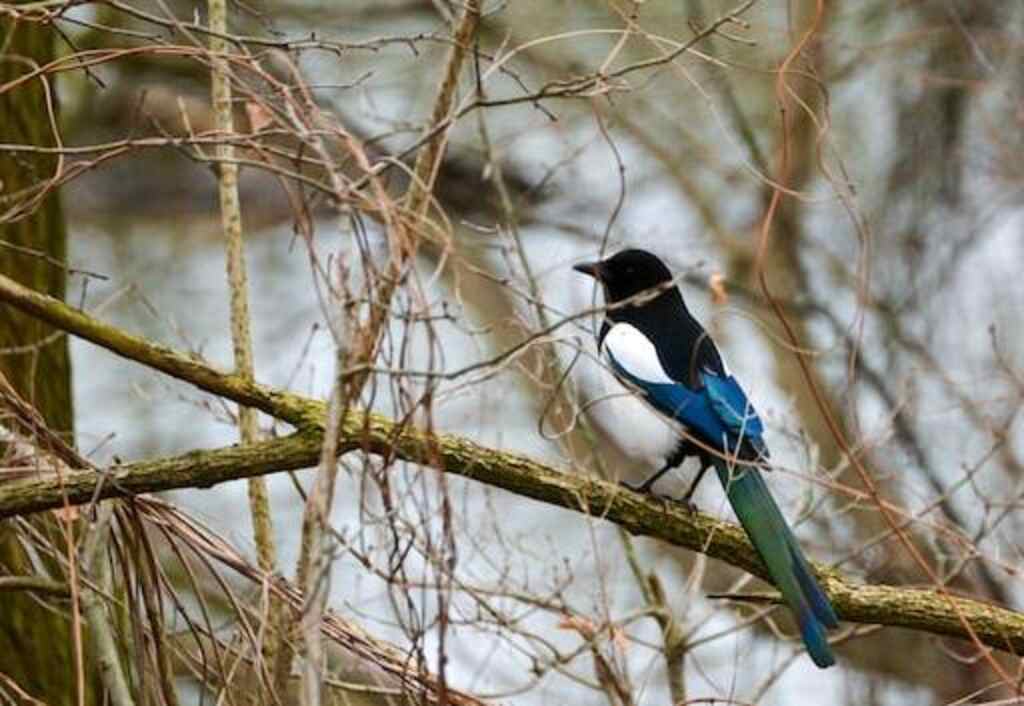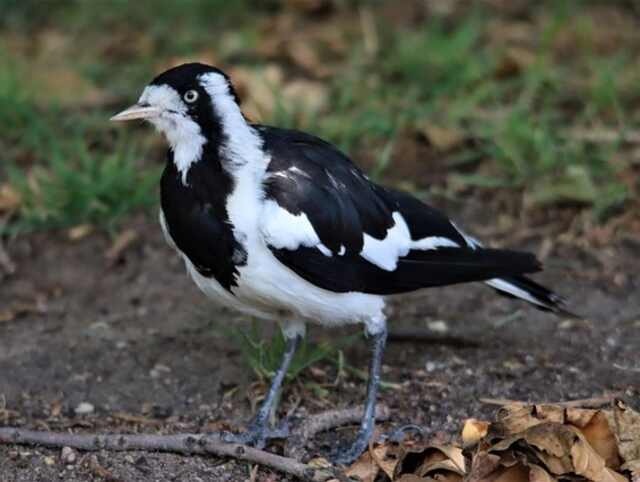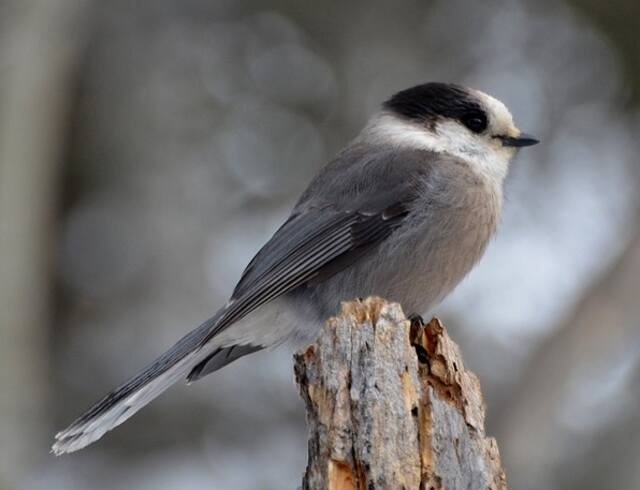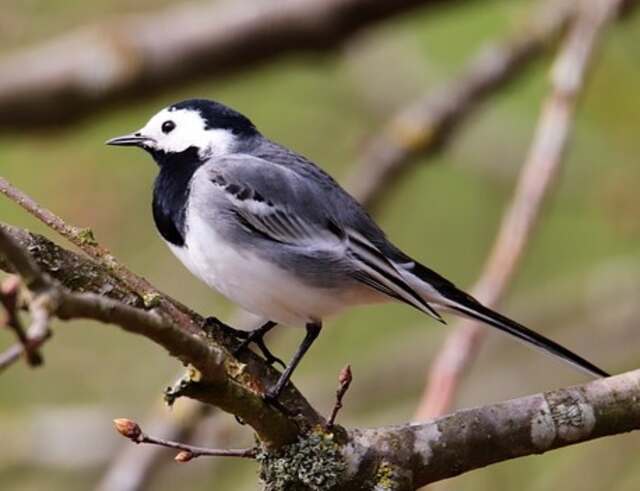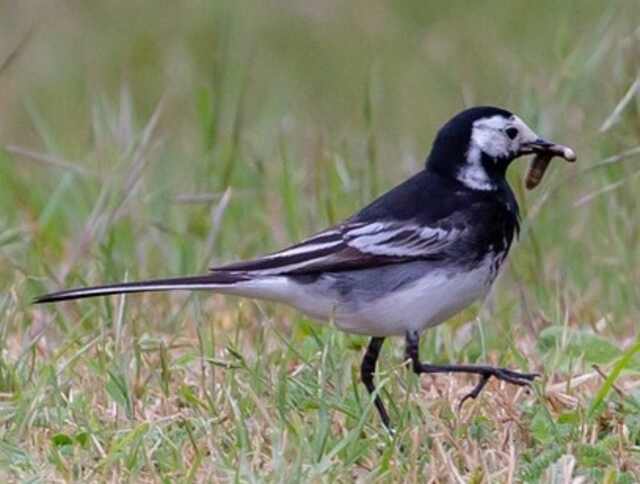Birds have always been an object of intense fascination for people. Their vivid plumage, diverse sizes, and unpredictable behavior make them an intriguing subject for bird enthusiasts.
One bird species that often bursts into view and catches people’s attention is the magpie, renowned for its bold personality and distinctive black and white plumage.
However, there are numerous other bird species that exhibit similarities, frequently appearing in a similar fashion to magpies, known as their doppelgängers.
This article delves into 18 such birds that look like magpies, exploring their shared characteristics and divergences, and revealing more about these mesmerizing feathered beings.
Table of Contents
- 1 Black-billed Magpie (Overview)
- 2 Birds That Look Like Magpies
- 2.1 Pied Butcherbird
- 2.2 Pied Currawong
- 2.3 Magpie-lark
- 2.4 Gray Butcherbird
- 2.5 Noisy Miner
- 2.6 Crimson Rosella
- 2.7 Eurasian Jay
- 2.8 Pinyon Jay
- 2.9 Satin Bowerbird
- 2.10 Willie Wagtail
- 2.11 Canada Jay
- 2.12 Common Raven
- 2.13 Clark’s Nutcracker
- 2.14 Blue Jay
- 2.15 Pied Crow
- 2.16 White Wagtail
- 2.17 Pied Wagtail
- 2.18 White-browed Wagtail
- 3 Author
Black-billed Magpie (Overview)
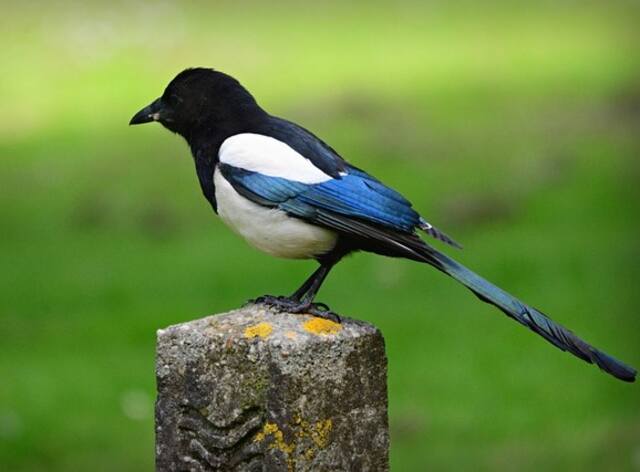
Characteristics
The Black-billed Magpie is a striking bird found across much of North America. These birds are black and white in coloration, with a long tail and a distinctive black bill. They have a length of around 18-24 inches and a wingspan of up to 2 feet.
Distribution Range
Black-billed Magpies are found throughout much of the western United States, Canada, and Alaska, as well as parts of Mexico. They prefer open country, including farmland, parks, and urban areas, and can also be found in mountainous regions.
Habitat
These birds are highly adaptable and can thrive in a variety of habitats, including grasslands, scrublands, and even deserts. They are known for their habit of collecting shiny objects, and have been observed taking items such as coins, jewelry, and even small tools.
Diet
The Black-billed Magpie is an omnivore, feeding on a variety of foods, including insects, small mammals, birds, eggs, fruit, and carrion. They are also known to consume seeds, grains, and other plant matter. These birds are opportunistic and will eat whatever is available to them, making them highly adaptable to changing environments.
Birds That Look Like Magpies
Pied Butcherbird
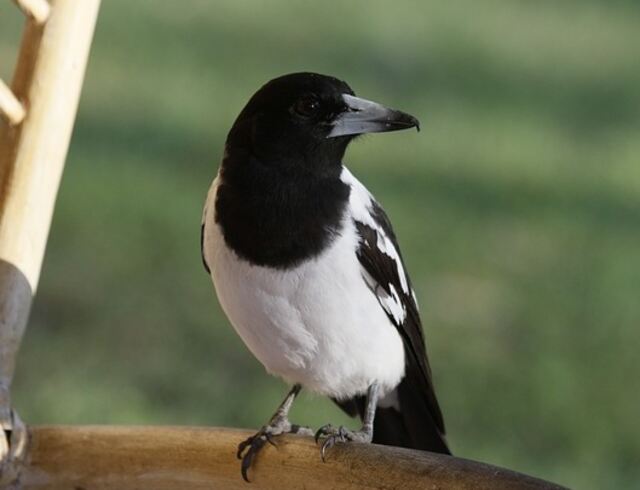
Pied Butcherbirds are charismatic songbirds found throughout much of Australia. They possess a unique vocalization ability, capable of mimicking other bird species’ calls and even human sounds. They inhabit a variety of habitats, including forests, woodlands, and urban parks.
Their diet consists mainly of insects and small animals, which they capture with their sharp beaks. With their bold black and white plumage and robust size, Pied Butcherbirds are a favorite among birdwatchers and nature enthusiasts. In contrast, Black-billed Magpies are found in western North America, from Alaska to Mexico.
They prefer open habitats such as grasslands, fields, and meadows. Their diet consists of insects, small animals, and fruits. Unlike Pied Butcherbirds, they are slightly larger and have a more slender build, with distinctive black and white plumage and iridescent green and blue feathers on their wings.
Black-billed Magpies are also known for their social behavior, forming large flocks and displaying a range of complex vocalizations and behaviors. Despite their differences, both species share a striking black and white coloration and a sharp, carnivorous beak.
Pied Currawong
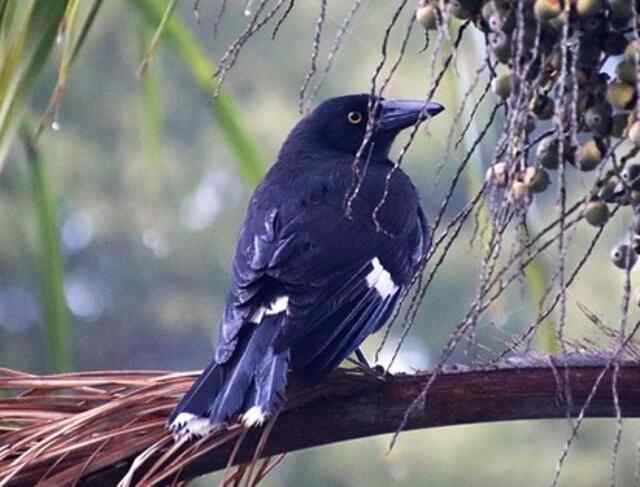
Pied Currawongs are large, black birds with bright yellow eyes and white patches on their wings. Bursting with personality, they are known for their loud and varied calls. Found in eastern Australia, they inhabit a range of habitats including forests, woodlands, and suburban areas. Their diet consists of insects, small animals, fruit, and carrion.
Black-billed Magpies, on the other hand, are also black and white birds, but with a distinctive long tail and a black bill. They are found throughout much of western North America, inhabiting open habitats such as grasslands, farmlands, and deserts. Their diet includes insects, small animals, seeds, and fruit.
They are similar to Pied Currawongs in their omnivorous diet and intelligence, but differ in size, appearance, and coloration. While Pied Currawongs are entirely black with white patches, Black-billed Magpies have a black head, white belly, and iridescent blue-green wings.
Additionally, Black-billed Magpies are known for their habit of collecting shiny objects and creating large nests, while Pied Currawongs are known for their loud and varied calls.
Magpie-lark
Magpie-larks are small to medium-sized birds found in Australia. They have black and white plumage with a distinct black band across their throat. They are known for their musical, melodious song and their habit of building mud nests. Furthermore, they can be found in a range of habitats, from forests to grasslands. The diet that they consume primarily compromised of insects, spiders, and small vertebrates.
In contrast, the Black-billed Magpie is a larger bird found in North America and Eurasia. They have black and white plumage with iridescent green and blue feathers. They are known for their loud, harsh call and their habit of hoarding shiny objects.
They can be found in a range of habitats, from forests to urban areas. Their diet consists of insects, small mammals, and carrion. While both birds have black and white plumage, the Black-billed Magpie is larger, has iridescent feathers, and has different habits and behaviors, such as hoarding shiny objects.
Gray Butcherbird
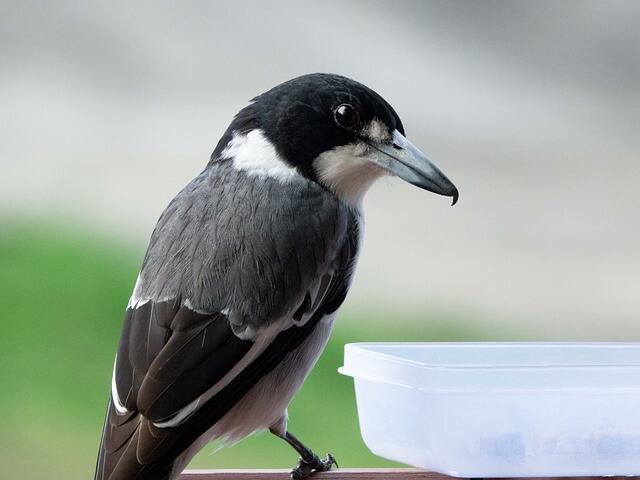
Gray Butcherbirds are medium-sized birds found throughout Australia. They have distinctive black and white plumage with a gray back and wings. Their hooked bills and strong jaws allow them to catch and kill insects, small mammals, reptiles, and birds. They are known for their loud, melodious songs and are often found in woodlands, forests, and urban areas.
Black-billed Magpies, on the other hand, are found in North America and are known for their black and white plumage with blue-green iridescence on their wings and tail. They inhabit open forests, fields, and towns and have a diverse diet consisting of insects, fruits, seeds, and small animals.
Unlike Gray Butcherbirds, they are social birds and often form large flocks. They are also known for their playful behavior and their habit of collecting shiny objects. Although similar in size and diet, the two species have distinct differences in appearance, coloration, range, and behavior.
Noisy Miner
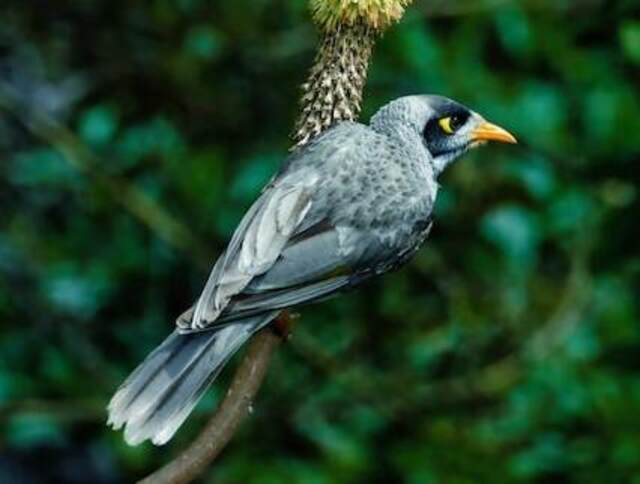
Noisy Miners are known for their vocal behavior. These native Australian birds have a distinctive yellow patch behind their eyes and a brown-gray body. They prefer woodland and urban areas and are common throughout eastern and southeastern Australia. Noisy Miners are omnivorous, feeding on insects, nectar, fruit, and even small vertebrates.
Black-billed Magpies, found throughout much of North America, have a similar omnivorous diet to Noisy Miners but have a larger range, spanning from Alaska to Mexico. They are easily recognizable by their black and white plumage, long tail, and iridescent green-blue feathers on their wings.
Unlike Noisy Miners, Black-billed Magpies are known for their intelligence and have been observed using tools and displaying complex social behaviors.
Crimson Rosella
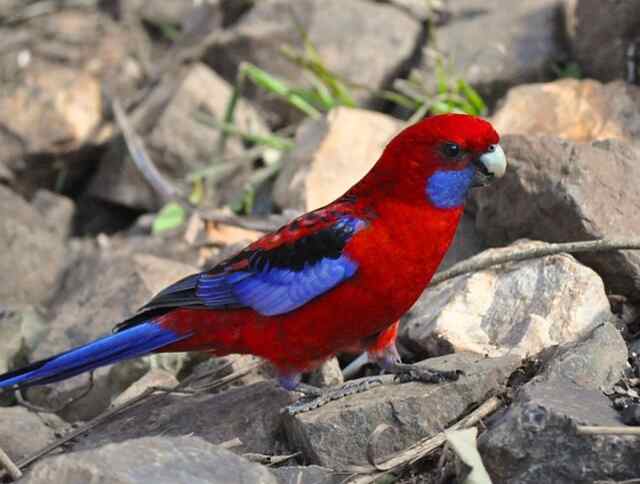
Rosellas are colorful and bursty parrots native to Australia. They have vibrant plumage, with red, blue, green, and yellow feathers, and a distinctive cheek patch. They inhabit forests, woodlands, and urban areas in eastern and southern Australia, and feed on seeds, fruits, and insects. Not only that, but they are social birds and may form flocks.
In contrast, Black-billed Magpies have a black and white appearance, with a long tail, and are found across North America. They inhabit open country, including farmland, parks, and urban areas. They have a varied diet, including insects, small mammals, and fruit, and are known for their habit of collecting shiny objects.
Rosellas are smaller and more colorful than Magpies, and are primarily seed-eaters. While both species are social, Rosellas are more likely to form flocks, while Magpies often form cooperative breeding groups.
Eurasian Jay
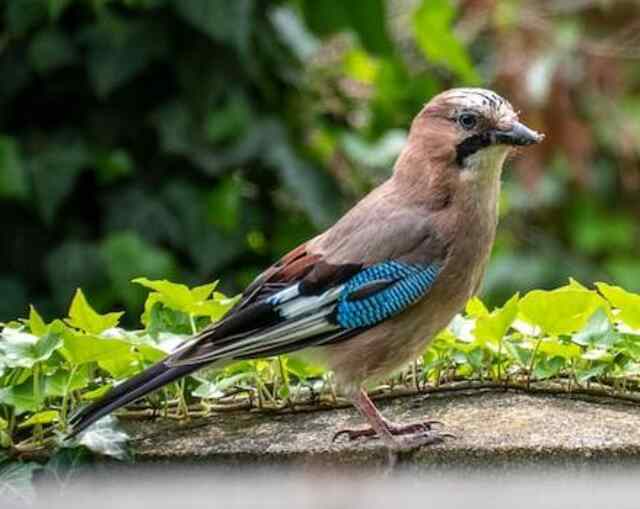
The Eurasian Jay is a colorful bird known for its noisy, screeching calls. It has blue and black feathers with white patches on its wings and a black ‘mustache.’ They are found throughout Europe and Asia in wooded areas and parks, and feed on insects, fruits, and nuts. They are also known for hiding food to eat later.
In comparison, Black-billed Magpies have a larger range, found throughout North America, while Eurasian Jays are limited to Europe and Asia. Magpies have a black and white appearance with a long tail, while jays have a blue and black appearance with white patches on their wings.
Magpies have a varied diet that includes insects, small mammals, and fruit, while jays mainly feed on insects and nuts. Both species are known for their intelligence and may hoard food, but magpies are also famous for collecting shiny objects.
Pinyon Jay
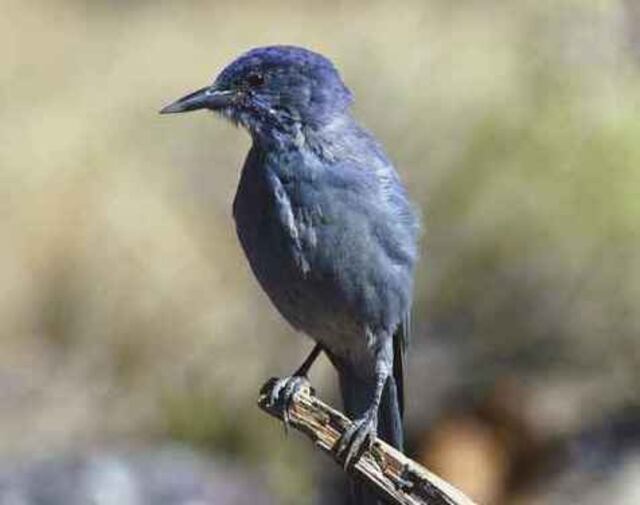
Pinyon Jays are social birds with a unique call that can be heard from far away. They have a distinctive blue-gray plumage with a black head and crest. These birds are found in pinyon-juniper woodlands in western North America and feed on pinyon pine seeds, insects, and fruits. They are known for their habit of caching food for later use.
In comparison, Black-billed Magpies are larger birds with black and white plumage and a long tail. They are found in open country across North America, from Alaska to Mexico, and feed on insects, small mammals, and fruit.
Unlike Pinyon Jays, Magpies are known for their habit of collecting shiny objects and building large, domed nests. Both species are intelligent and form cooperative breeding groups, but their appearance, habitat, and diet differ.
Satin Bowerbird
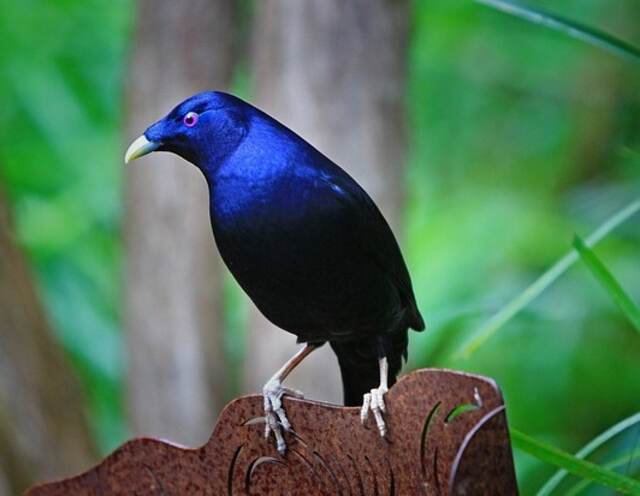
Satin Bowerbirds are known for their bursty vocalizations and striking appearance. The males have glossy blue-black feathers and vibrant violet eyes, while the females have duller green-brown feathers. They are found in eastern Australia, from Queensland to Victoria, in wet forests and woodlands.
Their diet consists mainly of fruit, but they also eat insects and flowers. They are known for building elaborate bowers, or display structures, decorated with blue objects like berries and bottle caps. In contrast, Black-billed Magpies are found across North America and have a black and white appearance with a long tail.
They inhabit open country, including farmland, parks, and urban areas. They have a varied diet, including insects, small mammals, and fruit, and are known for their habit of collecting shiny objects.
Unlike Satin Bowerbirds, they do not build elaborate structures for display, but they do nest in trees and form cooperative breeding groups. Both species are intelligent and may chase off other birds from their territory.
Willie Wagtail
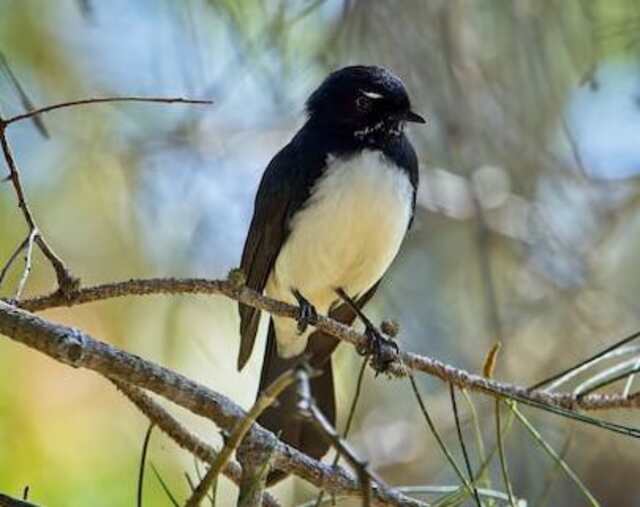
Willie Wagtails are small, black and white birds found throughout most of Australia. They have a long, black tail which they wag frequently, hence their name. They inhabit a wide range of environments, from urban areas to forests, and feed on insects and small invertebrates. Not only that, but they are known for their distinctive calls and agile flying skills.
In contrast to Willie Wagtails, Black-billed Magpies have a more varied range, found throughout North America and parts of Europe and Asia. They have a black and white appearance with a long tail, and inhabit open country, including farmland, parks, and urban areas.
They have a varied diet, including insects, small mammals, and fruit, and are known for their habit of collecting shiny objects. Both species are intelligent and adaptable, but the magpie is larger and more aggressive, often chasing off other birds from its territory.
Canada Jay
Canada Jays, also known as Gray Jays, are medium-sized birds with a rounded head and a short bill. They are found in boreal forests and mountainous regions across North America, and are known for their friendly and inquisitive behavior towards humans. Their diet consists of a variety of foods, including insects, berries, carrion, and even small rodents. They are also known for their habit of caching food for the winter.
In comparison, Black-billed Magpies and Canada Jays have some similarities and differences. Both are found in North America and have a varied diet that includes insects and fruit, but magpies are also known to consume small mammals and collect shiny objects.
Magpies have a black and white appearance with a long tail, while Canada Jays are mostly gray with a lighter belly. Canada Jays are much smaller than magpies and are found in forested habitats, while magpies can be found in a variety of open and urban environments. Additionally, while Canada Jays are friendly towards humans, magpies may be more aggressive towards other bird species.
Common Raven

The Common Raven is a large, black bird known for its bursty croaks and calls. They have a thick bill, shaggy throat feathers, and a wedge-shaped tail. They can be found across much of the Northern Hemisphere, including North America, Europe, and Asia, and inhabit a wide range of habitats, including forests, deserts, and tundras. They are omnivores, feeding on carrion, insects, fruit, and small animals.
Compared to the Black-billed Magpie, the Common Raven is larger and has a heavier bill. While they both have black feathers, the Raven’s shaggy throat feathers give it a more scruffy appearance. Ravens have a broader range, living in both the Northern and Southern hemispheres, and can be found in a wider range of habitats than Magpies.
Both species are omnivorous, but Ravens are more scavengers than hunters, and they have been observed using tools to obtain food. Additionally, Ravens are known for their intelligence and complex social behavior, while Magpies are known for their fondness for shiny objects.
Read more: 47 Fun Facts About Ravens (Uncover All The Secrets!)
Clark’s Nutcracker
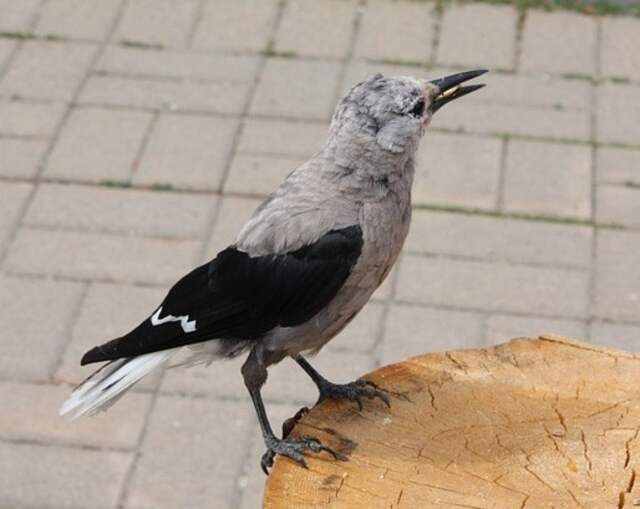
Clark’s Nutcrackers are known for their unique relationship with pine trees. These birds have a gray body with black wings and tail feathers, and a distinct white patch above their eyes. They are found in western North America, including high-altitude mountain forests, and feed on pine seeds, insects, and occasionally small mammals.
They are also known for their impressive spatial memory, allowing them to store and retrieve thousands of pine seeds. In contrast, Black-billed Magpies have a more diverse diet and are found across a wider range of habitats, including open country and urban areas. They are larger than Clark’s Nutcrackers, with black and white feathers and a long tail.
While both species are intelligent and may chase off other birds, Black-billed Magpies are also known for their habit of collecting shiny objects. Overall, while they share some similarities in behavior and habitat, Clark’s Nutcrackers are more specialized in their diet and habitat requirements compared to the adaptable Black-billed Magpie.
Blue Jay
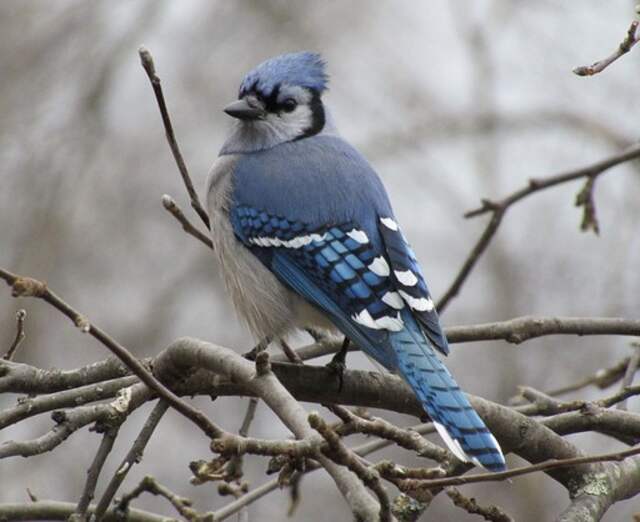
Blue Jays are known for their striking blue plumage, with white and black markings on their wings and tail. They are found throughout eastern and central North America, inhabiting forests, parks, and suburban areas. They have a varied diet, including insects, nuts, seeds, and fruit, and may also feed on small vertebrates like frogs and snakes.
They are known for their loud, harsh calls and are often heard before seen. In contrast, Black-billed Magpies are much larger and found throughout western North America, with black and white plumage and a distinctive long tail. They inhabit open country, including farmland, parks, and urban areas, and have a varied diet that includes insects, small mammals, and fruit.
They are known for their intelligence and may collect shiny objects. Both Blue Jays and Black-billed Magpies are intelligent and social birds, but they differ in their range, habitat, and appearance. Blue Jays are smaller than Magpies and have blue plumage, while Magpies have black and white plumage with a long tail.
Read more: What Attracts Blue Jays to your Yard?(Expert Tips)
Pied Crow
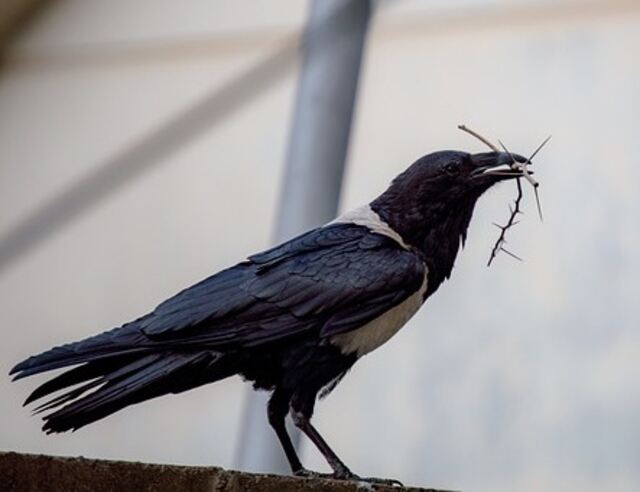
The pied crow (Corvus albus) is a medium-sized bird that is native to sub-Saharan Africa. It has a distinctive black and white plumage, with a black head, neck, wings, and tail, and a white chest and belly. Pied crows are found in a variety of habitats, including grasslands, savannas, woodlands, and urban areas.
Their diet is diverse, and includes insects, small mammals, reptiles, and carrion. In comparison to the pied crow, the magpie (Pica pica) is a larger bird that is found in Europe, Asia, and North America. Magpies have a black and white plumage as well, but their tails are longer and more fan-shaped than those of the pied crow.
They also have a distinctive green and purple iridescence on their wings and tail. Magpies are omnivores, feeding on a range of insects, small animals, fruits, and seeds. They are known for their intelligence, and are capable of using tools and solving complex problems.
Despite their differences in range, habitat, and diet, both pied crows and magpies are intelligent and adaptable birds with a wide-ranging diet.
White Wagtail
The White Wagtail, a small passerine bird, is known for its contrasting black and white plumage and wagging tail. It has a broad range, breeding across Europe and Asia, and wintering in Africa and South Asia. They prefer open habitats, including fields, wetlands, and urban areas.
Their diet consists of insects, spiders, and other small invertebrates, which they forage for on the ground or in shallow water. In contrast to the White Wagtail, the magpie is a larger bird with a distinctive black and white plumage and long tail.
They are also found in a broad range across Europe, Asia, and Africa, preferring woodland and farmland habitats. However, their diet is more diverse, including insects, fruit, and small mammals. They are known for their intelligent and curious behavior, often stealing shiny objects to decorate their nests.
Despite their differences in size, appearance, and behavior, both the White Wagtail and magpie are adaptable and successful birds in their respective habitats.
Pied Wagtail
Pied Wagtails are a tiny but mighty bird! With bold black and white feathers, they bop around on the ground and perch on low branches, constantly flicking their tails in excitement. These energetic little guys can be found all over Europe and Asia, from city parks to wild forests.
And let’s talk diet! They’re all about snacking on juicy insects, spiders, and other tiny critters. Now, let’s get chatty about magpies! These big birds are just as striking, with their sharp black and white plumage and long tails. And boy, do they have a knack for collecting shiny trinkets!
Magpies are tough creatures that can adapt to many habitats, from urban areas to the middle of nowhere. They chow down on insects, small animals, seeds, and fruits. But despite their size, both Pied Wagtails and magpies are clever and quick-witted, making them top-notch survivors in the animal kingdom!
White-browed Wagtail

The White-browed Wagtail is a flashy little bird with striking black and white plumage. It’s a skilled insect catcher, using its long tail to balance as it dashes around on the ground. This bird can be found across much of South and Southeast Asia, and it prefers wetland habitats like rivers, ponds, and rice paddies.
Its diet consists mainly of insects, but it will also eat small fish and crustaceans, making it a versatile predator. When comparing the White-browed Wagtail to the magpie, there are many differences to note. Magpies are larger and more robust, with distinctive black and white feathers and a long, forked tail.
They have a wide range that includes much of Europe and Asia, and they can be found in a variety of habitats from forests to urban areas. Magpies are omnivorous, feeding on insects, seeds, fruit, and small animals.
They are known for their raucous calls and their tendency to collect shiny objects. Despite their differences, both the White-browed Wagtail and the magpie are fascinating birds that display unique behaviors and adaptations.
Related Post: How to Attract Magpies to your Garden? (In 4 Easy Steps!)

